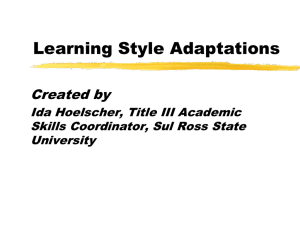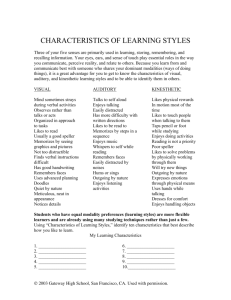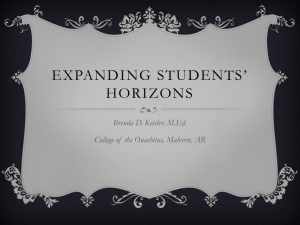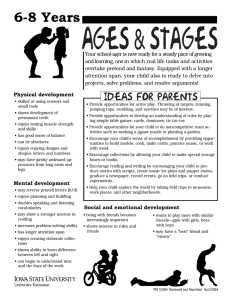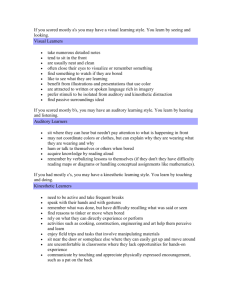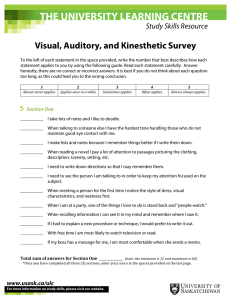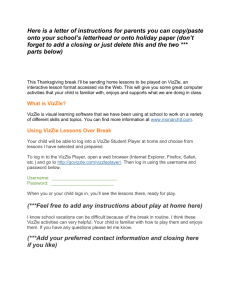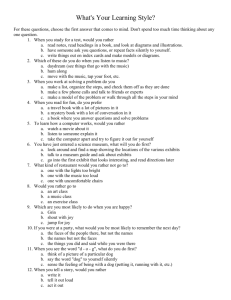Learning_Styles_Characteristics
advertisement
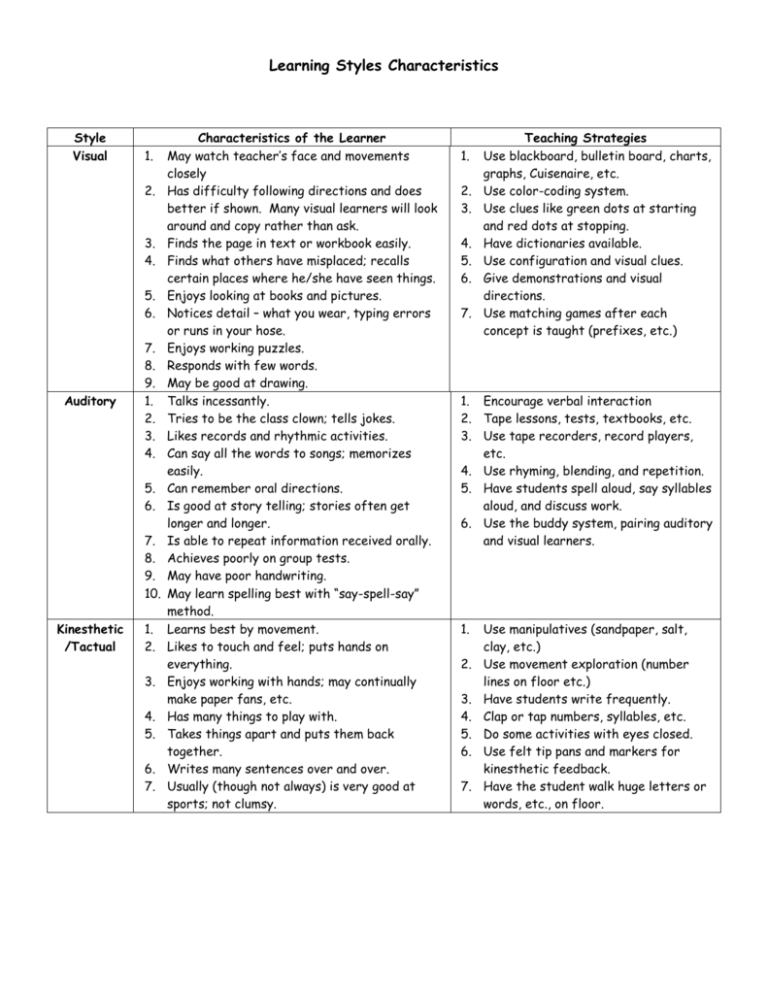
Learning Styles Characteristics Style Visual 1. 2. 3. 4. 5. 6. Auditory 7. 8. 9. 1. 2. 3. 4. 5. 6. 7. 8. 9. 10. Kinesthetic /Tactual 1. 2. 3. 4. 5. 6. 7. Characteristics of the Learner May watch teacher’s face and movements closely Has difficulty following directions and does better if shown. Many visual learners will look around and copy rather than ask. Finds the page in text or workbook easily. Finds what others have misplaced; recalls certain places where he/she have seen things. Enjoys looking at books and pictures. Notices detail – what you wear, typing errors or runs in your hose. Enjoys working puzzles. Responds with few words. May be good at drawing. Talks incessantly. Tries to be the class clown; tells jokes. Likes records and rhythmic activities. Can say all the words to songs; memorizes easily. Can remember oral directions. Is good at story telling; stories often get longer and longer. Is able to repeat information received orally. Achieves poorly on group tests. May have poor handwriting. May learn spelling best with “say-spell-say” method. Learns best by movement. Likes to touch and feel; puts hands on everything. Enjoys working with hands; may continually make paper fans, etc. Has many things to play with. Takes things apart and puts them back together. Writes many sentences over and over. Usually (though not always) is very good at sports; not clumsy. 1. 2. 3. 4. 5. 6. 7. Teaching Strategies Use blackboard, bulletin board, charts, graphs, Cuisenaire, etc. Use color-coding system. Use clues like green dots at starting and red dots at stopping. Have dictionaries available. Use configuration and visual clues. Give demonstrations and visual directions. Use matching games after each concept is taught (prefixes, etc.) 1. Encourage verbal interaction 2. Tape lessons, tests, textbooks, etc. 3. Use tape recorders, record players, etc. 4. Use rhyming, blending, and repetition. 5. Have students spell aloud, say syllables aloud, and discuss work. 6. Use the buddy system, pairing auditory and visual learners. 1. 2. 3. 4. 5. 6. 7. Use manipulatives (sandpaper, salt, clay, etc.) Use movement exploration (number lines on floor etc.) Have students write frequently. Clap or tap numbers, syllables, etc. Do some activities with eyes closed. Use felt tip pans and markers for kinesthetic feedback. Have the student walk huge letters or words, etc., on floor.

